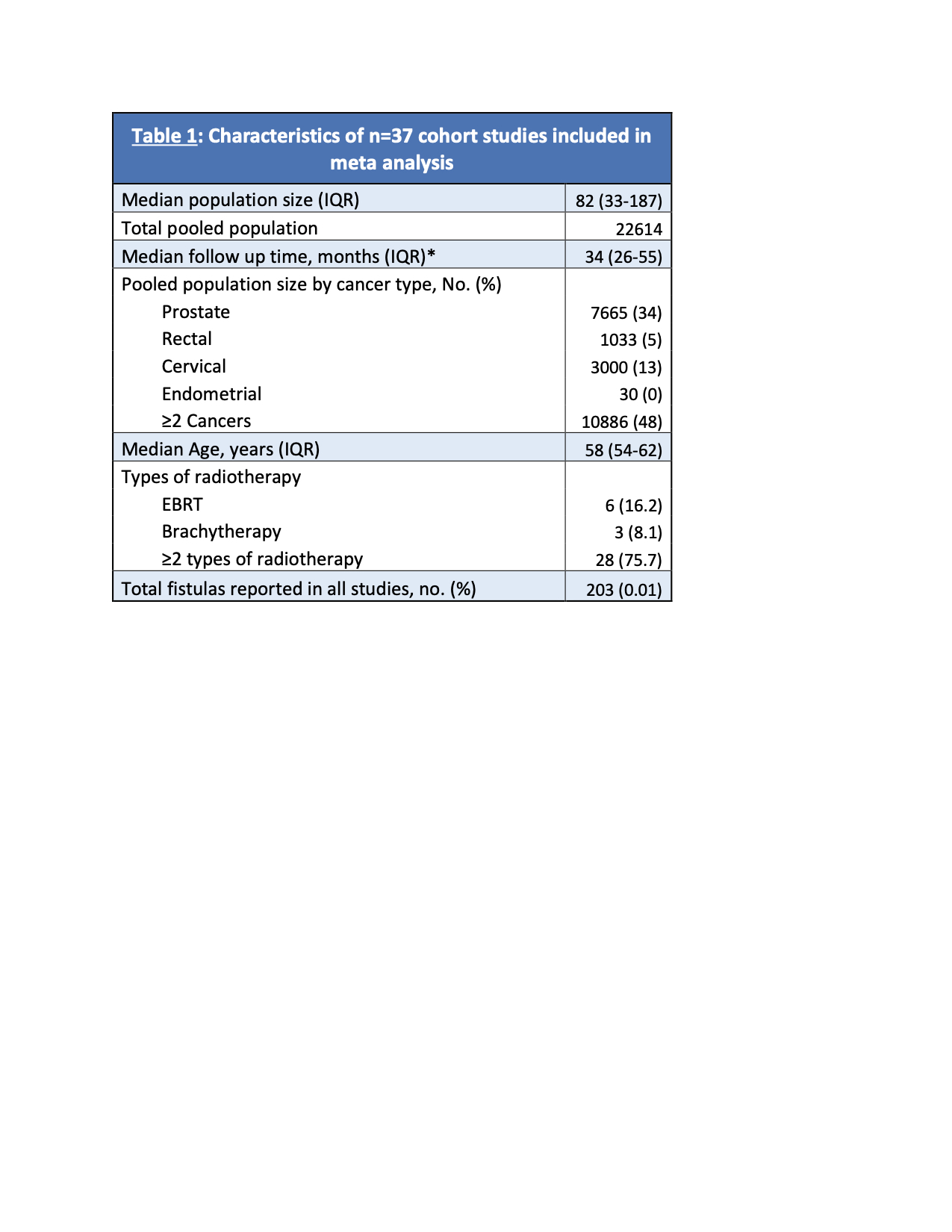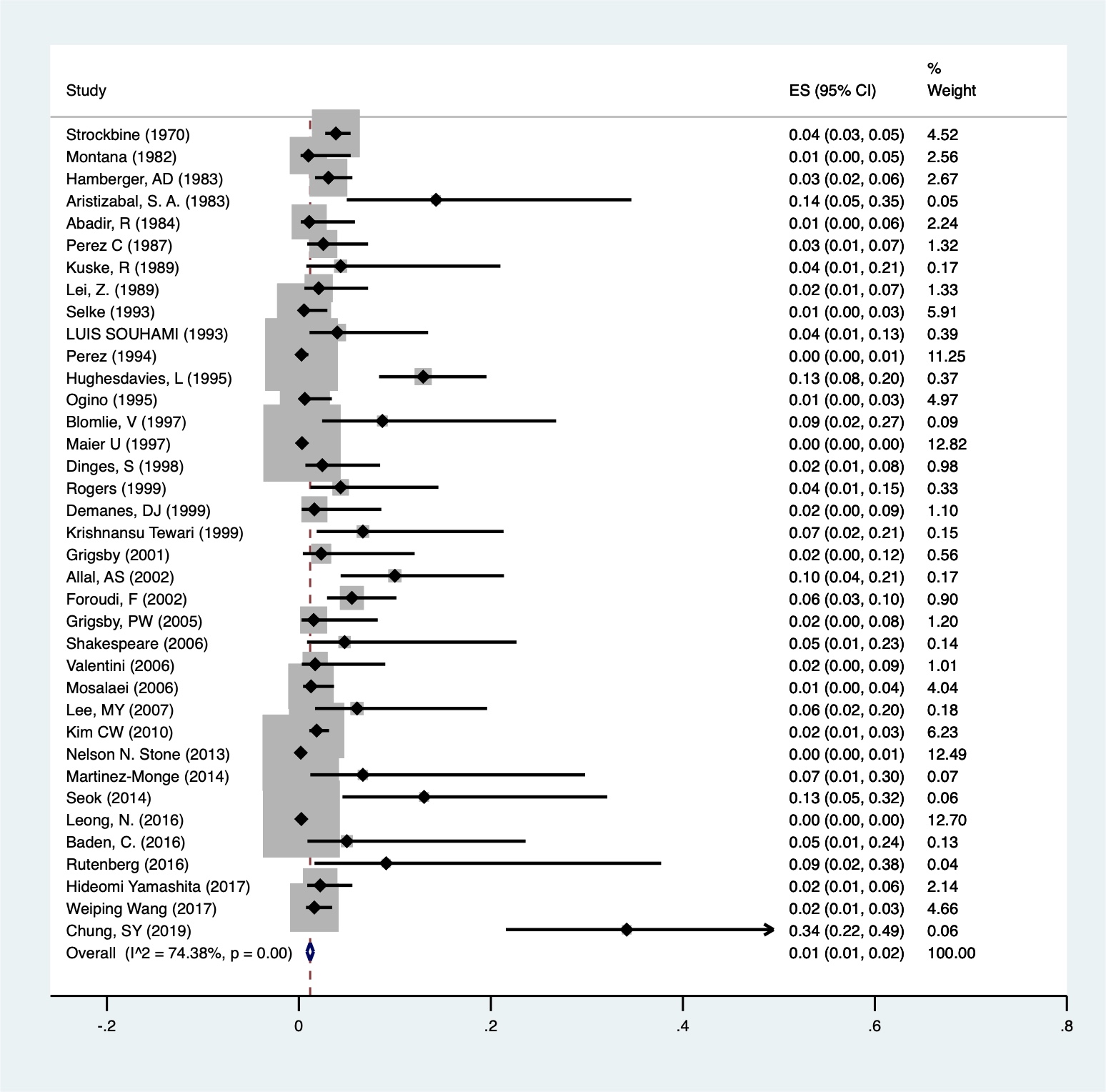Back
Poster, Podium & Video Sessions
Podium
PD22: Prostate Cancer: Localized: Radiation Therapy
PD22-08: Risk of radiation-induced fistula is low and may be increased in patients with prior pelvic radiation or concurrent chemotherapy: a systematic review and meta-analysis
Saturday, May 14, 2022
10:40 AM – 10:50 AM
Location: Room 252
Michael Sadighian*, Nizar Hakam, Gregory Amend, Nathan Shaw, Peggy Tahir, Isabel Elaine Allen, Behnam Nabavizadeh, Jordan Holler, William Shibley, Kevin Li, Behzad Abbasi, Alexander Bell, Osama Mohamad, Benjamin Breyer, San Francisco, CA

Michael J. Sadighian, MSc
Medical Student
UCSF
Podium Presenter(s)
Introduction: The purpose of this systematic review and meta-analysis is to aggregate and summarize existing data on fistula prevalence among patients with a history of pelvic radiotherapy for pelvic malignancy.
Methods: We queried PubMed, Embase, and Web of Science on October 7, 2020 for peer-reviewed publications pertaining to radiation-induced fistulas in the pelvis. For meta-analysis, we used the random-effects model, and we used the I2 statistic to quantify heterogeneity and the Newcastle-Ottawa Scale to assess risk of bias.
Results: Our meta-analysis included 37 cohort studies with a total of 22,614 patients exposed to pelvic radiotherapy between 1970 and 2019. Median follow-up time was 34 months (IQR 26-55). Pooled prevalence of radiation-induced fistula across all 37 cohort studies was 1% (95% CI: 1-2%, I2=74%, p=0.00). Fistula prevalence was higher in studies that included patients who were reradiated (7%, p=0.037) and patients on concurrent chemotherapy (3%, p=0.006) compared to those receiving radiotherapy alone (1%). No randomized controlled trials met inclusion criteria due to ambiguous and inconsistent reporting language for fistula occurrence.
Conclusions: There is significant heterogeneity among published cohort studies reporting fistula as an outcome of pelvic radiotherapy. Patients undergoing pelvic radiotherapy appear at low risk for developing fistulas. Risk of radiation-induced fistula may be increased in patients undergoing reradiation and those undergoing concurrent chemotherapy. There is need for cohort studies and randomized controlled trials that are specifically designed to illuminate the risk and predictors of fistula in this population.
Source of Funding: None.



Methods: We queried PubMed, Embase, and Web of Science on October 7, 2020 for peer-reviewed publications pertaining to radiation-induced fistulas in the pelvis. For meta-analysis, we used the random-effects model, and we used the I2 statistic to quantify heterogeneity and the Newcastle-Ottawa Scale to assess risk of bias.
Results: Our meta-analysis included 37 cohort studies with a total of 22,614 patients exposed to pelvic radiotherapy between 1970 and 2019. Median follow-up time was 34 months (IQR 26-55). Pooled prevalence of radiation-induced fistula across all 37 cohort studies was 1% (95% CI: 1-2%, I2=74%, p=0.00). Fistula prevalence was higher in studies that included patients who were reradiated (7%, p=0.037) and patients on concurrent chemotherapy (3%, p=0.006) compared to those receiving radiotherapy alone (1%). No randomized controlled trials met inclusion criteria due to ambiguous and inconsistent reporting language for fistula occurrence.
Conclusions: There is significant heterogeneity among published cohort studies reporting fistula as an outcome of pelvic radiotherapy. Patients undergoing pelvic radiotherapy appear at low risk for developing fistulas. Risk of radiation-induced fistula may be increased in patients undergoing reradiation and those undergoing concurrent chemotherapy. There is need for cohort studies and randomized controlled trials that are specifically designed to illuminate the risk and predictors of fistula in this population.
Source of Funding: None.




.jpg)
.jpg)